#Passiflora Caerulea Passion Flower
Explore tagged Tumblr posts
Photo

Passiflora Caerulea Passion Flower
521 notes
·
View notes
Text




#PASSIFLORA CAERULEA *Constance Elliotte*- PASSION FLOWER🤍🤎💚
@samirafee
#source: samirafee#own pictures#photographers on tumblr#nature#plants#florist#passiflora caerulea#passion flower#art photography#kaleidoscope#june 2024
35 notes
·
View notes
Text



Ortica Simpatica, Passiflora caerulea, il fiore della passione… 💓
3 notes
·
View notes
Photo





Passiflora caerulea (may be poisonous!) ( Passion Flower is a woody vine with intricate blue, purple, red, or white flowers. Several species, which act as sedatives and anxiolytics, are consumed as a tea or herbal supplement. Some Passion Flower species may contain small amounts of MAOIs, potentially interacting with other chemicals and medications. And some species, notably P. caerulea, also contain poisonous cyanogenic glycoside.)
1. Passiflora caerulea Color photo of a Passiflora caerulea flower, bud, and foliage in late October. (San Francisco, USA) Photo by Erowid, © 2004 Erowid.org
2. Passiflora caerulea Close-up color photo of the white and blue P. caerulea flower. (Italy) Photo by Justin, © 2004 Erowid.org
3. Passiflora caerulea Beautiful image of a P. caerulea flower. (British Colombia) Photo by Norman C. Crom, © 2001 Erowid.org
4. Passiflora caerulea Color photo of a flowering Passiflora caerulea vine growing in a pot. (Belgium) Photo by Laurent Limbort, © 2004 Erowid.org
5. Passiflora caerulea Close-up color photo of a P. caerulea flower. Photo by Alberto Tucci, Erbeofficinali.com, © 2001 Erowid.org
3 notes
·
View notes
Text
The National Flower Of Paraguay

Passion flowers blooming all at the same time in the conservatory. Photo credit: Jonathan Chua.
This national flower of Paraguay has possibly some kind of calming effects and had been used by some to treat anxiety. A bunch of these are now growing in the Cloud Forest but I don’t think they are meant for the staff.
#Passion Flower Vine photos#flower pics#flora fauna#flora photography#Passiflora ‘Caerulea’#canon photography#canon eos rp#tamron 16 300mm#photographers on tumblr
1 note
·
View note
Text
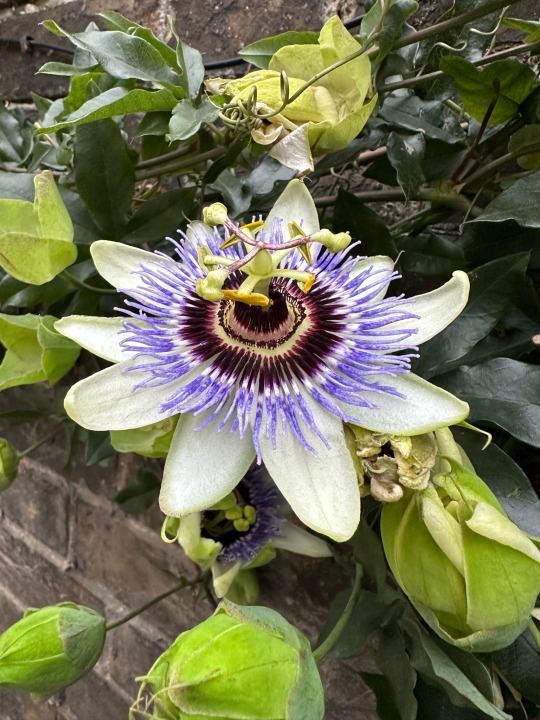
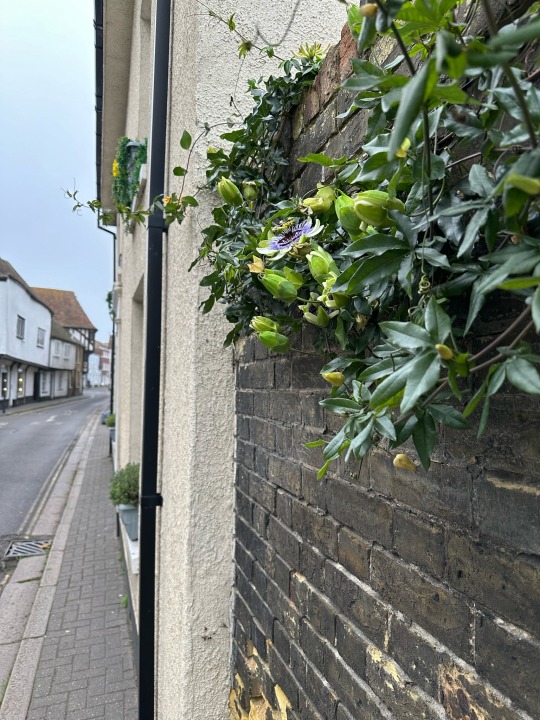
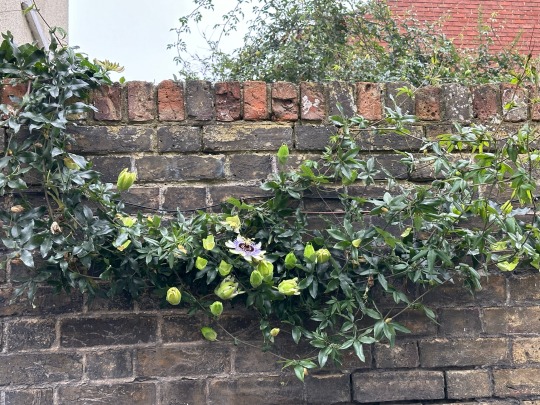
Plant of the Day
Friday 8 November 2024
Probably the last flower of the season for this climber Passiflora caerulea (blue passion flower, blue crown, common passion flower, flower of five wounds). It was on a garland of stems appearing over a garden wall to surprise me on the street.
Jill Raggett
#passiflora#blue passion flower#blue crown#common passion flower#flower of five wounds#climber#walled garden#wall#urban landscape#plants#horticulture#gardens#garden#kent#Sandwich
213 notes
·
View notes
Text

The roses in this shot from the Walpurgis no Kaiten trailer are pretty obvious at first glance, but take a look at the arch in the background. Those are passionflowers (Passiflora sp.) and their symbolic meaning, like the roses, is abundantly clear: someone loves Madoka very much--passionately, even. I wonder who it could possibly be?
However, passionflowers are named for a different kind of passion--the passion of Jesus Christ, with Catholic priests likening different parts of the flower to his suffering and death. With a few exceptions, each flower only lasts for a single day before dying. Given Homura's Catholic background and propensity for self-sacrifice, that symbolism practically writes itself, especially since the flowers are also purple, the same color as her soul gem.
As if that were not enough, passionflowers are known in Japanese as tokeisō (時計草) or 'clock plant' and I just... this is not even remotely subtle anymore, is it? I cannot see enough detail to identify to species, and there are hundreds of them + cultivars, but the most likely suspect is the blue passionflower, P. caerulea, which is very common in cultivation.
Roses and passionflowers do not typically bloom at the same time, so this is another subtle indication that time no longer follows normal rules and reality is what Homura makes of it.
If the passionflowers represent Homura, then it makes sense that the pink roses likely represent Madoka--they are the same color as her hair, and they are heavily featured on her magical girl bow. Viewed in this light, the fact that these vines are on separate arched trellises could be a representation of how Homura and Madoka are separated from each other--that they are literally moving in different circles that do not touch or interact.
This will change, of course, with the sudden arrival of the doppelganger!Homura in the next shot, but once again, I am impressed at how much information SHAFT has managed to pack into a single seemingly innocuous shot.
453 notes
·
View notes
Text
MILGRAM Birth Flower Translation Compilation
Every Milgram character has a flower in their birthday art with its own meaning (hanakotoba aka flower language). This is a compilation of translations of Yamanaka's tweets explaining the hanakotoba These translations were done by me and Maristelina
Also I'm including latin names because sometimes plants share colloquial names or just have a million to pick from
Haruka: Viburnum dilatatum (Linden viburnum/ガマズミ) [translation by @maristelina]
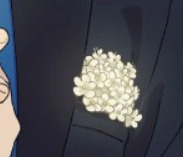

Yuno: Agave amica (Tuberose/チュベローズ) [tl by maristelina]


Fuuta: Iris tectorum (Roof iris/イチハツ) [tl by maristelina]


Muu: Rosa rugosa (Beach rose/ハマナス) [tl by maristelina]
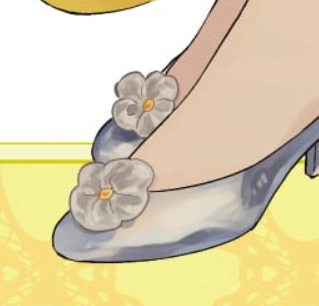

Shidou: Ageratum (Whiteweed/アゲラタム) [tl by maristelina]
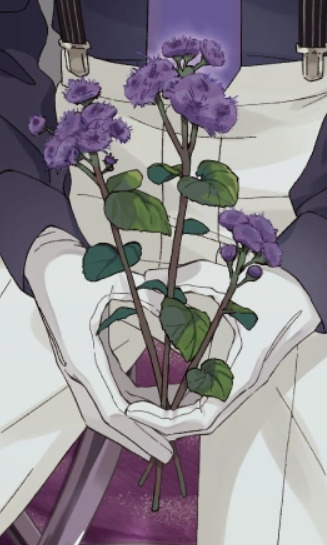

Mahiru: Capsella bursa-pastoris (Shepard's purse/ナズナ)


Kazui: Tradescantia ohiensis (Ohio spiderwort/ムラサキツユクサ)


Amane: Passiflora caerulea (Blue passion flower/トケイソウ)


Mikoto: Liriope muscari (Lily turf/ヤブラン)
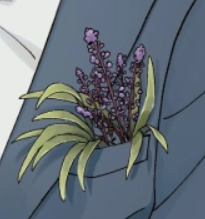

Kotoko: Monstera (モンステラ)


#milgram#ミルグラム#milgram translation#haruka sakurai#yuno kashiki#fuuta kajiyama#muu kusunoki#shidou kirisaki#mahiru shiina#kazui mukuhara#amane momose#mikoto kayano#kotoko yuzuriha
102 notes
·
View notes
Note
What FLOWER do you associate with everyone?
OOOOO fun! Ok so-
Nezha is obviously lotus flowers. But to go along with it, I think Jing would be BLUE lotus flowers. I mean, if Nezha was made from pink ones, I think Jing would also be made from the blue ones. (Hint hint au hint 👀) although I also think Nezha could be associated with roses.
Azure Lion would be cyan forget me nots.
Muzha would be Chrysanthemum! I just think they’re pretty. Jinzha would be Hibiscus, both bc yellow and wealth symbolism.
The monkies would have flowers based off their fruits. Wukong would have peach flowers, Macawue would be Plum blossoms, and Mk would be the apricot flowers cluster. (Fruit flowers are VERY pretty)
Erlang to me would be a strawflower.
Pigsy I feel like would be Magnolia, same with Tang.
Sandy is Jazmine flowers, and often makes Jazmin tea (leaves from the vine-)
Mei would be a water poppy!
Redson for me is Amaryllis, while his mama is Anemone. Suprisingly, I think DBK would be Dahlia.
Yellow tusk is a sunflower, and Peng is a daisy! (🤣 makes no sense but that’s what I think!)
Xiangliu is a Passiflora caerulea, or blue passion flower.
#lego monkie kid#lmk aus#lmk au#lionsword#lego monkie kid au#lmk li jing#lmk#lmk nezha#lmk azure lion#lmk noodle gang#lmk xiangliu#ask rec#ask anon#ask answered#asks open#anon ask#answered asks#ask me anything#Flowers
19 notes
·
View notes
Photo
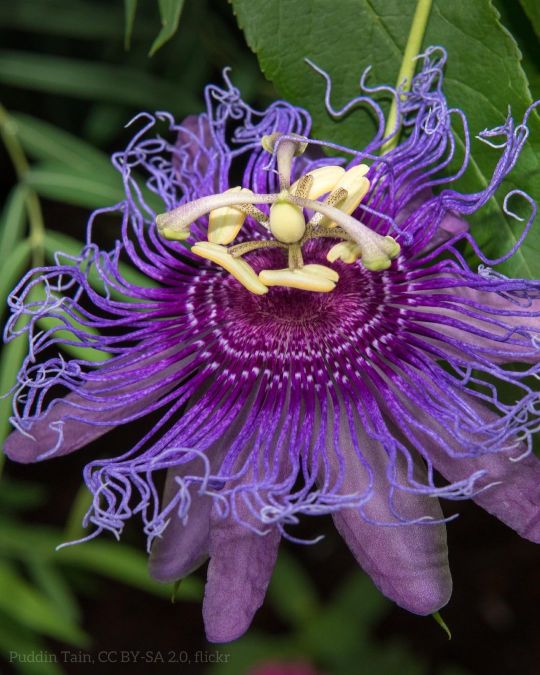
💘Looking for flowers to “send” your beloved? This Valentine’s Day, we’ve got you covered with some tantalizing options you may not have considered… 1. For someone sweet, how about the true passion flower (Passiflora incarnata)? Bees and ants feed on its nectar, while a number of critters—from butterfly larvae to songbirds—snack on its egg-sized fruit. Humans also munch on its fruits, which can be eaten raw or made into jelly! 2. When love hurts, we suggest bleeding hearts (Lamprocapnos spectabilis). This perennial is originally from regions of eastern Asia. Though its heart-shaped flowers are beautiful, watch out… this plant is poisonous! 3. In the mood for a smooch? Try hot lips (Palicourea elata). This tropical flower can be found in parts of Central and South America. Its distinctive bright red leaves, known as bracts, attract pollinators like butterflies and hummingbirds. 4. Make a statement with the naked man orchid (Orchis italica). The flowers of this plant are endowed with a unique shape: They’ve been said to resemble a man “in the buff!” 5. If you’re smitten, try cupid’s dart (Catananche caerulea). This attractive flower blooms for weeks at a time. It’s said that ancient Greeks and Romans used it as an ingredient in love potions. 6. …and if you just think love stinks, the corpse lily (Rafflesia arnoldi) is the flower for you. Its scent, which has been compared to rotting flesh, attracts carrion flies which spread its pollen from flower to flower. It’s also the largest flower in the world! #valentines #flowers #biodiversity #amnh #museum https://www.instagram.com/p/CondlFzv5GM/?igshid=NGJjMDIxMWI=
187 notes
·
View notes
Note
What's your favorite type of flower?
Hey!
Well, what an unexpected question! (and the very first someone asked me on Tumblr btw ^_^)
I had to think about it for a while because I don’t really have one. But I think I like flowers that can be easy to take care of – I hate see them die T.T – and flowers that can surprise me.
For an exemple, there is a market where I sometimes buy little orchids with a lot of flower buds for my house. I love to discover the flowers when they finally open! Sometimes they are very weird, but I like them anyway and I always hope that they will flourish next year, so they can surprise me again.
In another context, I would think about the Passiflora Caerulea or Passion Vines or “Clock-Flower” (“Passiflore Bleue” in French). They spectacularly bloom – sadly only one time - with the rising sun and then close in the end of the afternoon when the sun light goes down. There was a Passiflora Caerulea in my parents’ garden, and it was lovely to see all these flowers coming to life each day just like some little fairies proudly waving at you, and then disappearing in the evening, but still giving space to other flowers to bloom the next day.
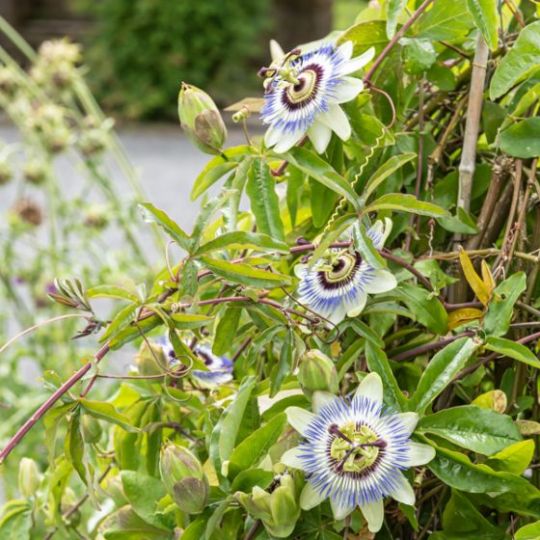
9 notes
·
View notes
Text
The Allure of Azure: Mastering the Art of Growing Blue Passion Flowers
Embark on a captivating journey with the Blue Passion Flower in this blog. From its historical roots to its growing needs and challenges, discover the allure and satisfaction of cultivating this tropical beauty in your garden.
Picture this: A winding vine, adorned with exotic, dazzling blue flowers, curling along a trellis in your garden. That was my dream, and the star of that dream was the Blue Passion Flower (Passiflora caerulea). But cultivating this tropical beauty was more of a journey than I ever imagined. If you’ve ever dreamt of nurturing your own Blue Passion Flower, join me as I walk you through my journey.…
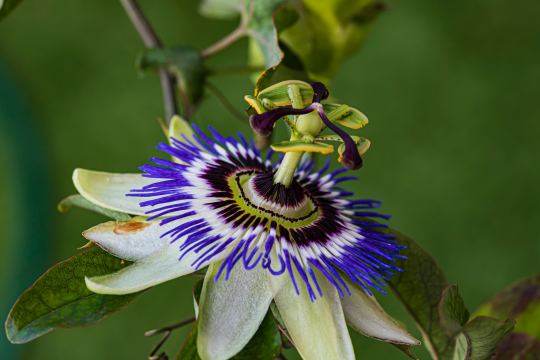
View On WordPress
#Blue Passion Flower#Climbing Vines#companion planting#Exotic Plants#fertilizer requirements#Flower Care#Flower gardening#Flower History#Garden Plants#gardening#Gardening Challenges#Gardening Experiences#Gardening Journey#Gardening Tips#harvesting#home gardening#horticulture#outdoor gardening#Passion Flower Care#Passion Vine#pests and diseases#plant care#Plant History#plant propagation#soil quality#storage#sunlight requirements#tropical plants#watering needs
2 notes
·
View notes
Text
May 30, 2018 Passion flower (Passiflora caerulea) in Los Angeles, CA
May 30, 2018 Passion flower (Passiflora caerulea) in Los Angeles, CA #flower #passionflower #passifloracaerulea #losangeles #lawomanphoto #onthisday
Photo by Christy Borgman

View On WordPress
0 notes
Text
Unleashing Floral Brilliance: The Ultimate Guide to Growing Passion Flower for a Captivating Garden Focal Point

Growing the Passion Flower is an enjoyable, rewarding experience. This unique, exotic flower can be used for a variety of purposes, from culinary to medicinal. When ingested, Passion Flower has a slightly sweet, mellow flavor that tantalizes the palate. With its long vines, ornamental leaves, and long-lasting flowers, the plant can be used as a decorative landscaping option, adding a touch of vibrant color and beauty to the garden. In addition, due to its medicinal benefits, Passion Flower can be brewed and enjoyed as a tea or tincture. Regardless of its purpose, growing the Passion Flower is an exciting venture, providing aromas and visuals that can be enjoyed by the whole family.
Growing Passion Flower: How To Cultivate A Vibrant Garden Focal Point
Ah, the passion flower. Its delicate beauty and vibrant colors make it a truly captivating addition to any garden. If you're looking to create a stunning focal point that will leave your neighbors green with envy, look no further. In this comprehensive guide, we'll walk you through the art of growing and cultivating passion flowers, ensuring that your garden becomes a haven for these mesmerizing blooms.
Getting Started: Choosing the Right Passion Flower
Before you begin your journey into the world of passion flowers, it's important to select the right variety for your climate and personal preferences. With over 500 species to choose from, you're bound to find one that speaks to your soul. Some popular choices include the Passiflora incarnata (hardy passion flower), Passiflora caerulea (blue passion flower), and the Passiflora edulis (edible passion fruit). Each variety offers its own unique beauty and characteristics, so take your time and choose wisely.
Planting and Caring for Your Passion Flower
Now that you've chosen your passion flower, it's time to get your hands dirty. Passion flowers thrive in well-drained soil with plenty of sunlight, so make sure to find a suitable location in your garden. Dig a hole that's twice the width of the plant's root ball and gently place the passion flower in, backfilling with soil until firmly planted. Be sure to water it well and provide a trellis or support for your vine to climb.
Passion flowers are relatively low-maintenance, but a little extra care goes a long way. Regularly watering your plant and providing a layer of mulch around the base will help retain moisture and suppress weeds. Additionally, a balanced liquid fertilizer once a month during the growing season will give your passion flower the nutrients it needs to thrive. Remember, a happy plant equals a happy gardener.
The Art of Pruning
Pruning is an essential part of passion flower care. It not only helps maintain the plant's shape and size but also encourages better flowering. Prune your passion flower in early spring before new growth emerges, removing any dead or damaged branches. You can also lightly prune throughout the growing season to control its size and promote lateral growth. Just be careful not to over-prune, as this may inhibit the flower's ability to bloom to its fullest potential.
Dealing with Pests and Diseases
Even the most beautiful gardens can face challenges from pests and diseases, and passion flowers are no exception. The most common culprits include aphids, spider mites, and leafhoppers. To combat these pesky invaders, try spraying your plants with a mix of neem oil and water. This organic solution acts as a natural insecticide and helps keep your passion flowers bug-free. If diseases such as powdery mildew or root rot become an issue, consider adjusting your watering practices or consulting a local gardening expert for advice.
Enjoying the Fruits of Your Labor
As if the stunning flowers weren't enough, some passion flower varieties also produce delicious fruits. The Passiflora edulis, commonly known as the passion fruit, is a prime example. These delectable fruits are not only rich in flavor but also packed with vitamins and antioxidants. Once your passion fruit reaches a deep purple color, it's ready to be harvested. Simply cut it open, scoop out the juicy flesh, and enjoy it as is or add it to your favorite recipes. Just be warned, they're so delicious that you may have to fight off your neighbors for a taste!
Conclusion: Cultivating Passion and Beauty
Growing passion flowers is not just about creating a stunning focal point in your garden; it's a journey of cultivating beauty, passion, and patience. As you tend to your plants, you'll witness the intricate dance of nature as the vines climb, the flowers bloom, and the fruits ripen. So, why not embark on this captivating adventure? With the right care, your garden will become an oasis of passion and a haven for these marvelous flowers. Happy gardening!
Learn more about gardening with Taim.io!
0 notes
Photo


Passiflora edulis (Purple Passion Fruit) ( Passion Flower is a woody vine with intricate blue, purple, red, or white flowers. Several species, which act as sedatives and anxiolytics, are consumed as a tea or herbal supplement. Some Passion Flower species may contain small amounts of MAOIs, potentially interacting with other chemicals and medications. And some species, notably P. caerulea, also contain poisonous cyanogenic glycoside.)
# Passiflora edulis Closeup of a Passiflora edulis flower in September. [Goa, India] Photo by Miluschka. © 2006 Erowid.org
Passiflora edulis Passiflora edulis flower in a monsoon. [Goa, India] Photo by Miluschka. © 2006 Erowid.org
4 notes
·
View notes
Text
14th September
Rood Day/ Holy Cross Day
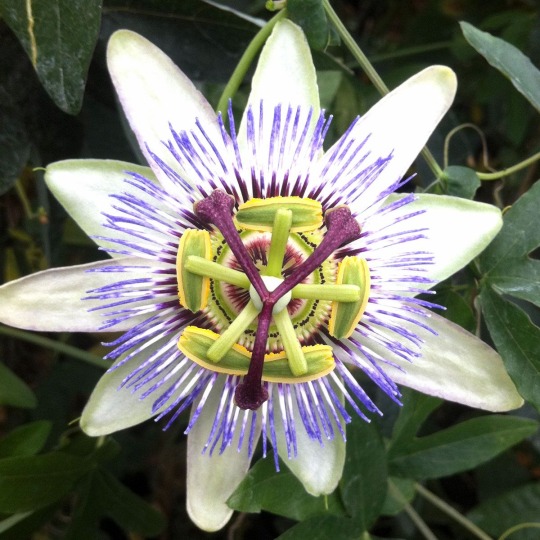
Passiflora caerulea. Source: Thorncroft Clematis website
Today is Rood Day or Holy Cross Day, named after the wood of the cross on which Christ was crucified and dating from a medieval time when the veneration of holy relics was very much part of Christian practice. With the Protestant Reformation, the notion of dedicating a feast day to a piece of wood was considered both idolatrous and absurd and dropped by the new Anglican Church, although the feast remains within the Roman Catholic liturgical calendar. Passion Flowers are said to bloom on this day because their ornate flowers allegedly resemble the cross, nails and Crown of Thorns associated with the crucifixion. Less credibly, other parts of the plant are supposed to symbolise Jesus’ wounds, the Apostles and Heaven.
In Lincolnshire, today is a nutting day but those that do might come to a hellish end, because Satan is out nutting today too - perhaps looking for horse chestnuts to roast over his infernal fires.
0 notes